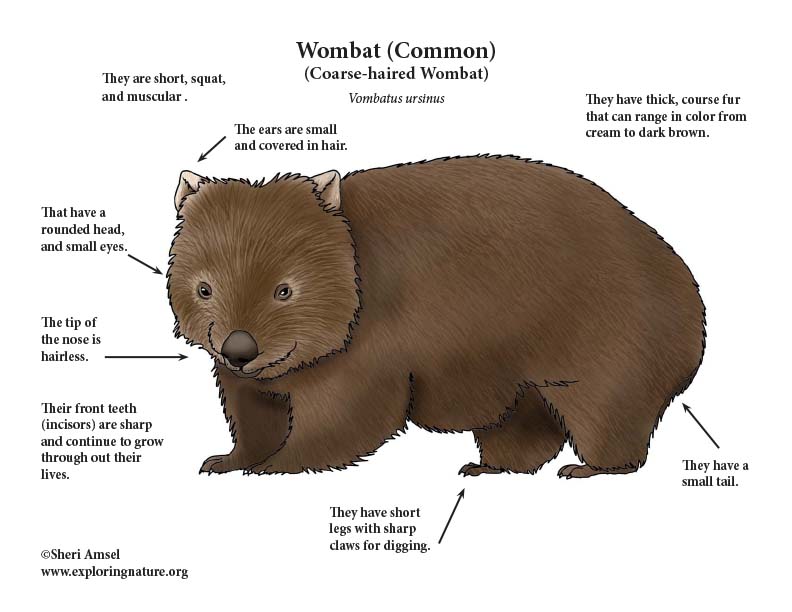

The common wombat is found in southeastern Australia, Tasmania and Flinders Island.
They live in wet eucalyptus forests, coastal hillsides, and gullies and hills near streams.
They are short, squat, and muscular with a rounded head, and small eyes. They have short legs with sharp claws for digging. They have a small tail and thick, course fur that can range in color from cream to dark brown. Their front teeth (incisors) are sharp and continue to grow through out their lives. The tip of the nose is hairless. The ears are small and covered in hair. They can weigh up to 75 pounds (35 kg) and reach 3.5 feet long (1,100 mm).
They are active at night (nocturnal) or early in the morning (crepuscular). They are solitary animals, except for females with young. They dig burrows using strong claws and line them them with grass. They spend upward of 16 hours a day sleeping in their grassy nests. During warm, sunny days, they will lie out in the sun. They hiss and growl when threatened.
They are herbivores eating grass, shrubs, roots, bark, and moss.
They have few natural predators, but are killed by eagles, Tasmanian devils, dogs, and humans.
They are marsupials. Females have pouches, like kangaroos, except they open toward the back. They deliver one tiny baby (joey) after a month of pregnancy (gestation) directly into their pouch, usually in April to June (which is fall in Australia). The baby will attach to a nipple and drink milk for several months, growing steadily for 6 months before it leaves the pouch. They may keep nursing for more than a year and stay with their mothers for 1.5-1.75 years.
They can live up to 30 years in captivity, only half that (15 years) in the wild. They are not considered threatened, but are listed as a "vulnerable" species.
Kingdom: Animalia
Phylum: Chordata
Class: Mammalia
Order: Diprotodontia
Family: Vombatidae
Genus: Vombatus
Species: Vombatus ursinus

